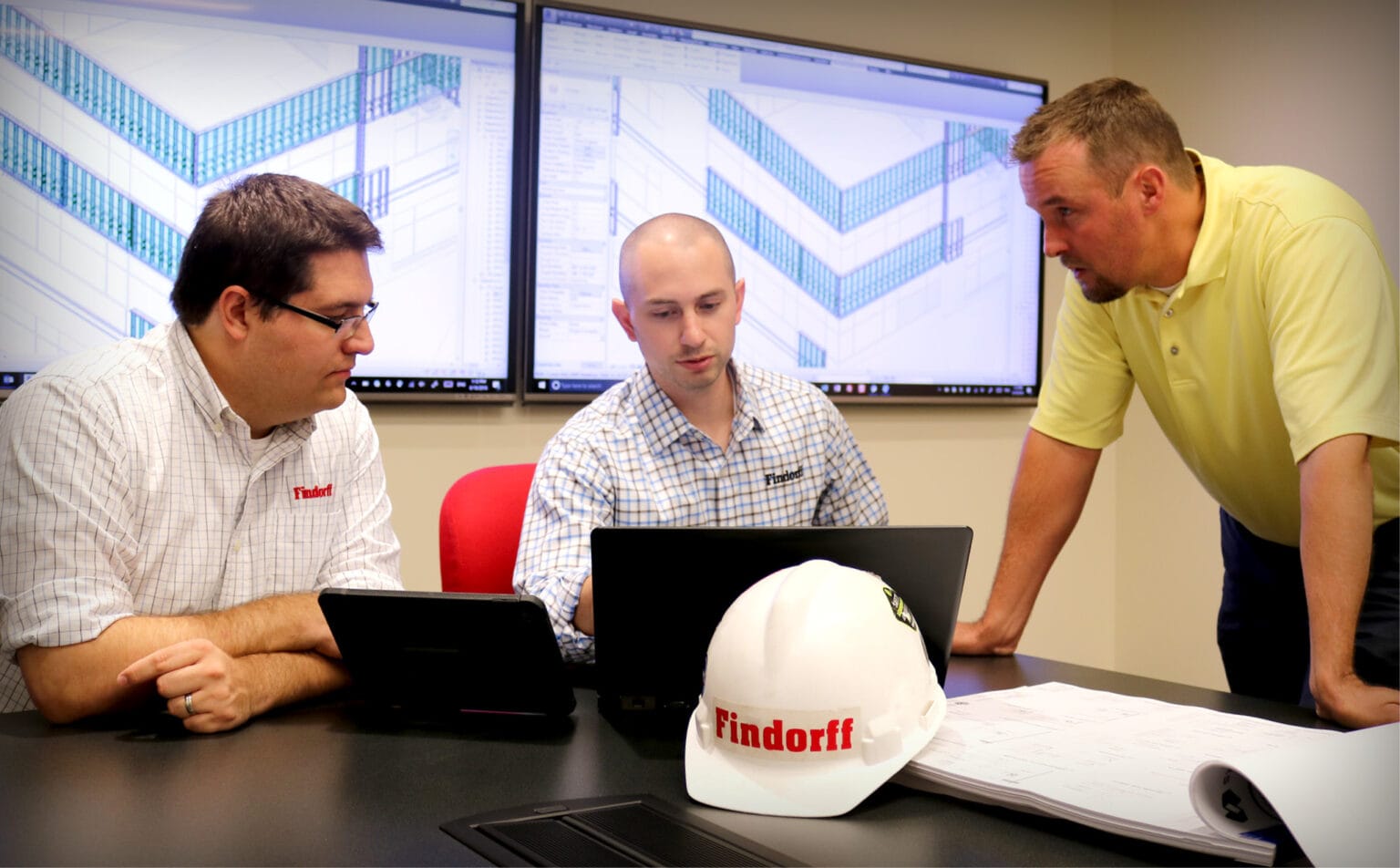Design Drivers in the World of Construction: Prefabrication & Virtual Construction

Blog written by Findorff’s Prefabrication & Construction Process Manager Justin Mitten and Senior Virtual Construction Specialist Joel Powers
Long before a shovel hits the ground, key factors drive a building’s design. In the world of construction, two driving factors that go hand in hand are prefabrication and virtual construction. Findorff has been performing these services on countless projects for years, offering unique insight into the industry.
Prefabrication is a process that typically starts during the design development phase or earlier. At this time, we can apply lessons learned from prior work, as well as identify and optimize different elements of a building’s design. From here, we determine what parts of a building can be fabricated offsite in a controlled environment. In turn, we expedite schedules, increase quality, determine cost-saving solutions, and streamline construction efforts.
Like prefabrication, virtual construction takes place early on. It involves developing and managing digital models of a building’s physical components, ranging from MEP/FP systems to load-bearing structures. No longer do we have to solely rely on specification drawings or traditional blueprints. Virtual construction offers our project managers, consultants, and clients 3D representations of how a facility will be built. We have also recognized other benefits including improved communication, risk reduction, increased productivity, and streamlined schedules.
As these two design drivers are key to a project’s success, our prefabrication and virtual construction teams routinely collaborate with each other. An example of this is how we engineer wall panels. Initial plans and shop drawings are developed by our prefabrication team. A Virtual Construction Engineer then models the wall panels with detailed information to guide prefabrication efforts. We routinely meet with field leadership to identify potential constructability issues and installation strategies for prefabricated building components. Together through such coordinated efforts, we are better prepared before the first footing is even poured.
The new headquarters for Summit Credit Union is a great example where prefabrication and virtual construction offered major efficiencies. Slated for completion in February 2019, it will be a six-story facility spanning 190,000 square feet. As part of the scope, our virtual construction team modeled 700 exterior wall panels, over 170 of which were specifically developed with shop drawings used by our prefabrication team. In turn, quality issues have been reduced where no rework has been required, saving time and money. Findorff’s prefabrication team also provides “kitting” services. This involves precutting and presorting lumber, which was purchased in bulk. The sorted lumber is divided into parts, each of which is treated as a “kit” for various areas of the building. Lumber is then delivered to correspond with the time prefabricated wall panels arrive to the jobsite. As a result, jobsite waste is minimized, costs are reduced, safety is improved, and project efficiency is increased.
Undoubtedly, prefabrication and virtual construction play significant roles in the built environment. As technology continues to develop for these major drivers of design, so have our various construction practices. We have started to incorporate reality capture, augmented reality, robotics, and drone technologies into every phase of construction. Through such efforts, we are advancing our position as a leading construction manager in the Midwest and trusted partner for our clients.
